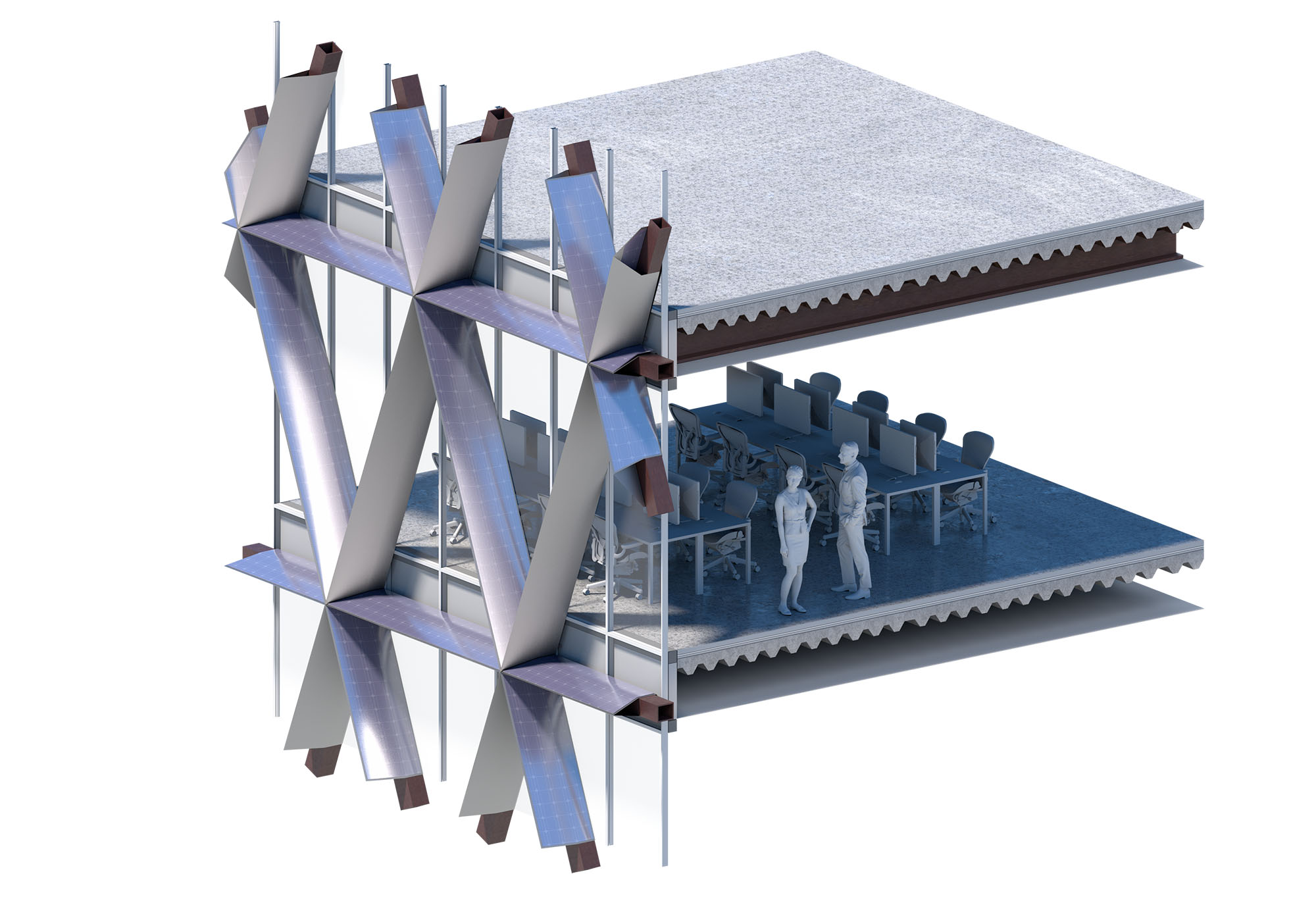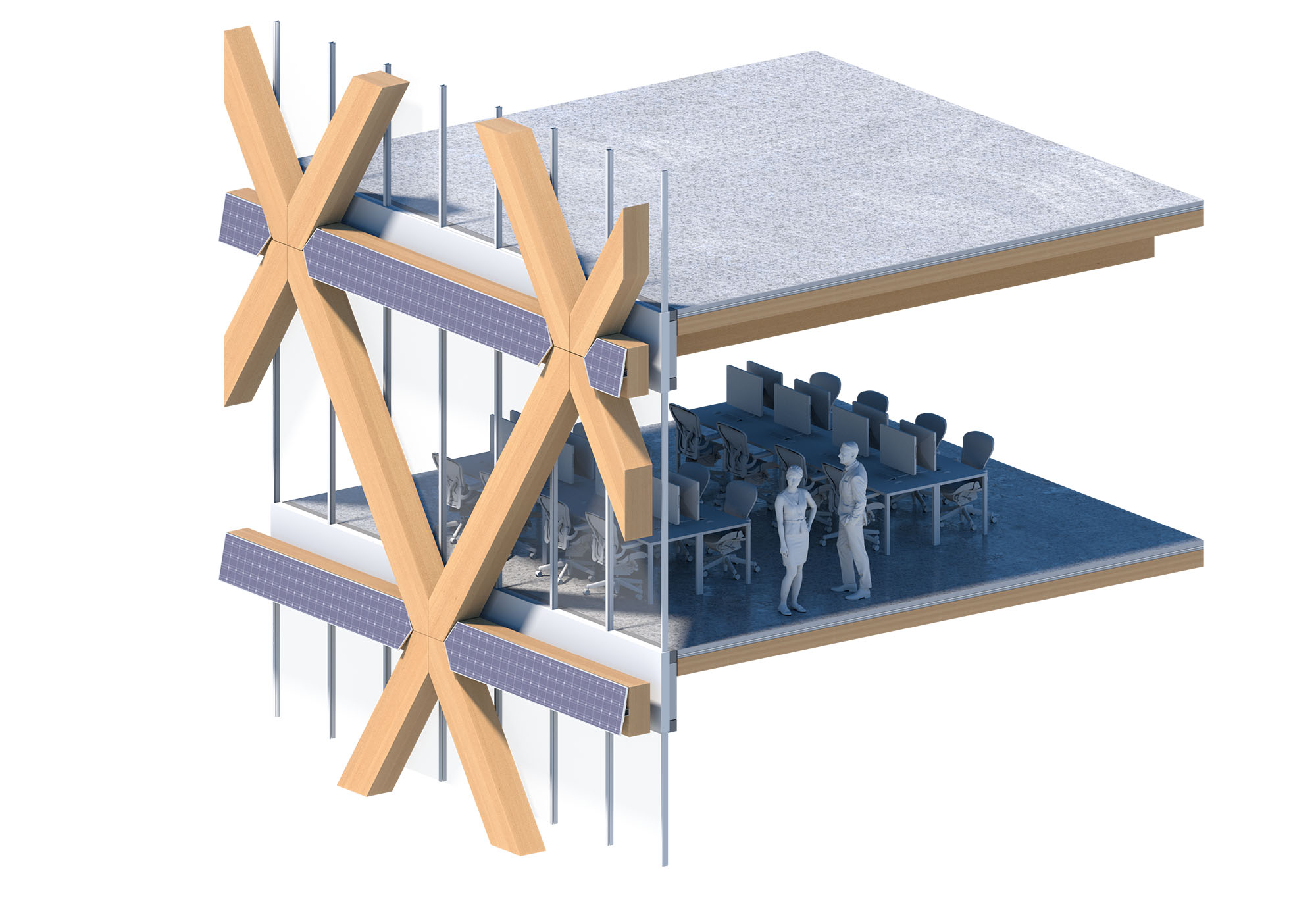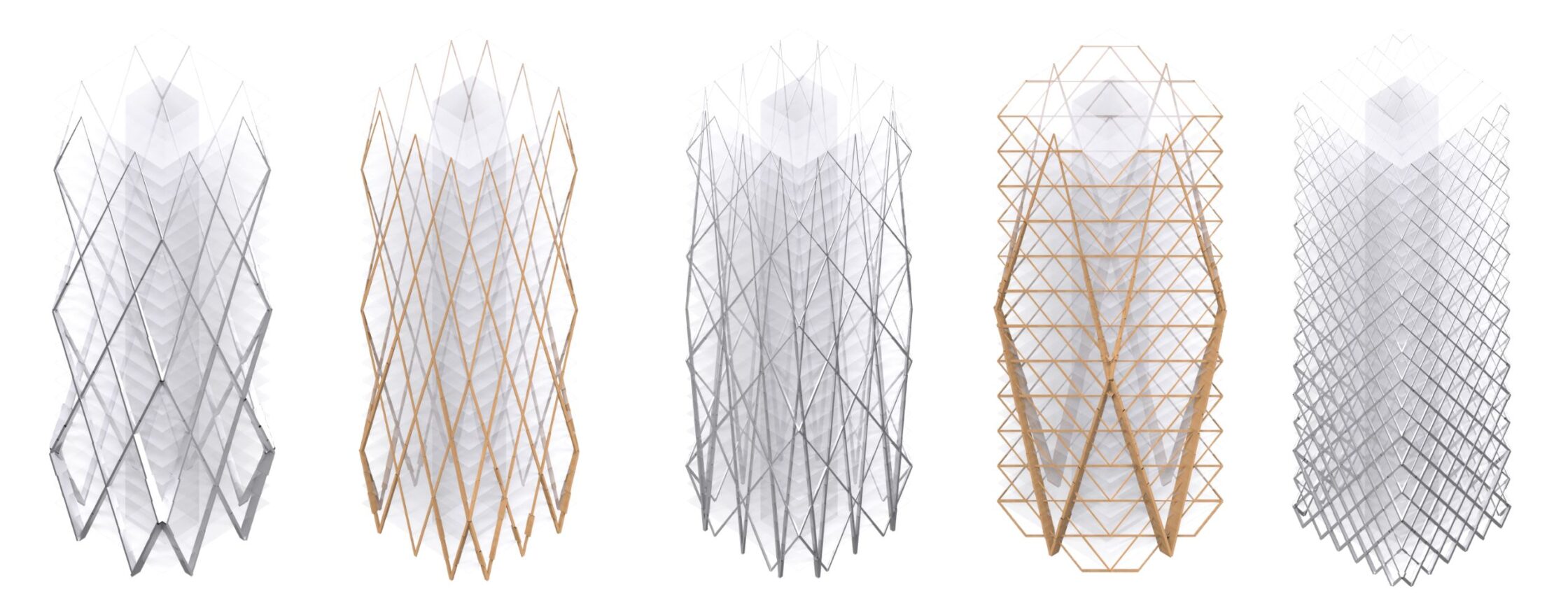Solar Exoskeletons – An integrated building system combining solar gain control with structural efficiency. Ramon Elias Weber, Caitlin Mueller, Christoph Reinhart. Solar Energy, 2022. https://doi.org/10.1016/j.solener.2022.05.048
We propose the use of solar exoskeletons, an integrated building system that combines material efficiency in structural load transfer with passive solar gain control. This offers an impactful way to respond to the UN climate goals, as the architecture and engineering disciplines face the challenge of delivering low carbon buildings. While reducing operational and embodied emissions is often considered independently, we can show how approaching them in tandem, through a novel building system, can offer significant savings. With large spans for maximum spatial flexibility and full glazing maximizing daylight, high-rise buildings are often suboptimal in terms of their material usage from steel frame construction and cooling demand from uncontrolled solar gains.
We view solar exoskeletons as a sustainable pathway for future high-rise structures – combining solar gain control through external shading with a highly efficient structural system optimized for lateral loads in tall buildings. We present an automated workflow that combines parametric modeling of architectural elements and structural simulation with Radiance-based annual radiation simulations and an operational energy model in EnergyPlus. Evaluating embodied carbon and energy use intensity of midrise and tower buildings in timber and steel, we compare hundreds of iterations for a prototypical building in Phoenix, USA. Our results show that exoskeletons can lead to embodied and operational carbon reductions in the lateral load-resisting structural system of 37–80% and 24–48%, respectively, vis-à-vis conventional construction techniques. Adding photovoltaic modules to the external shading system can lead to net zero building solutions for the buildings investigated in this case study.


